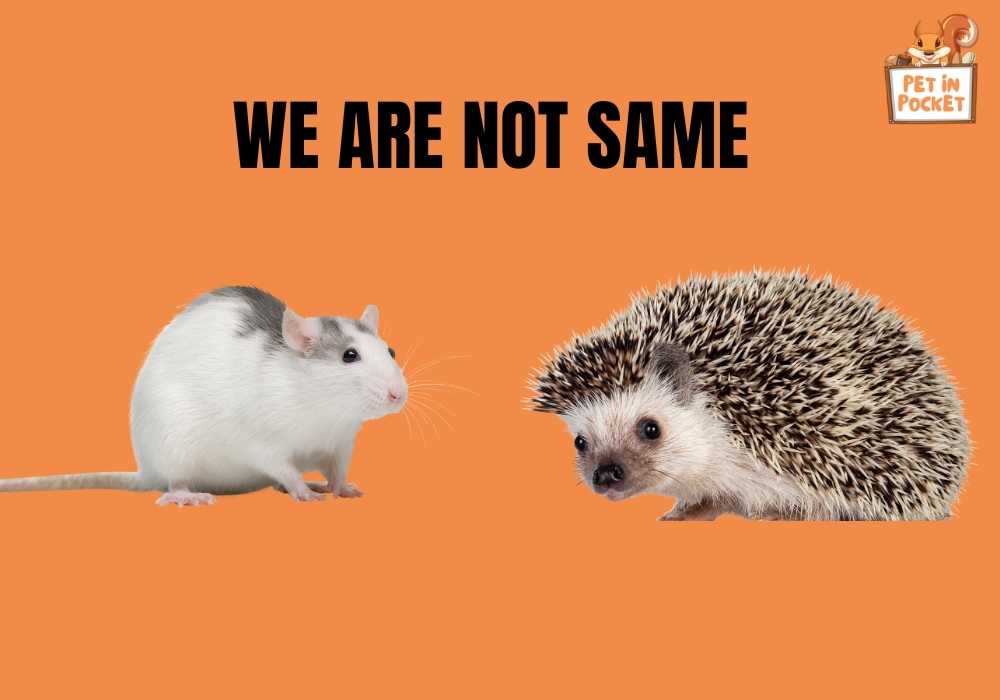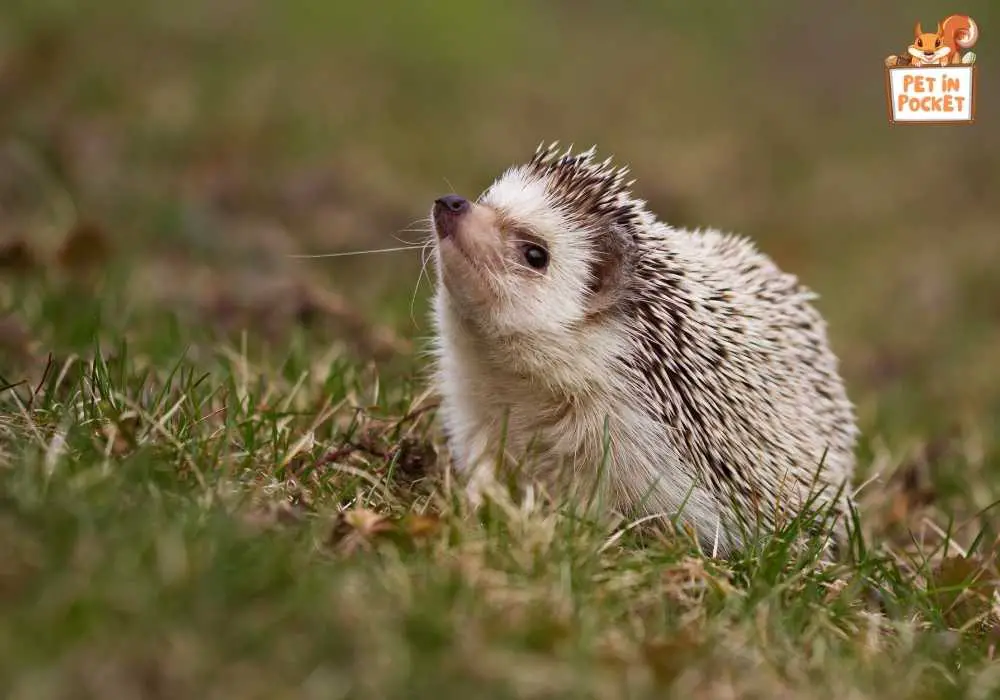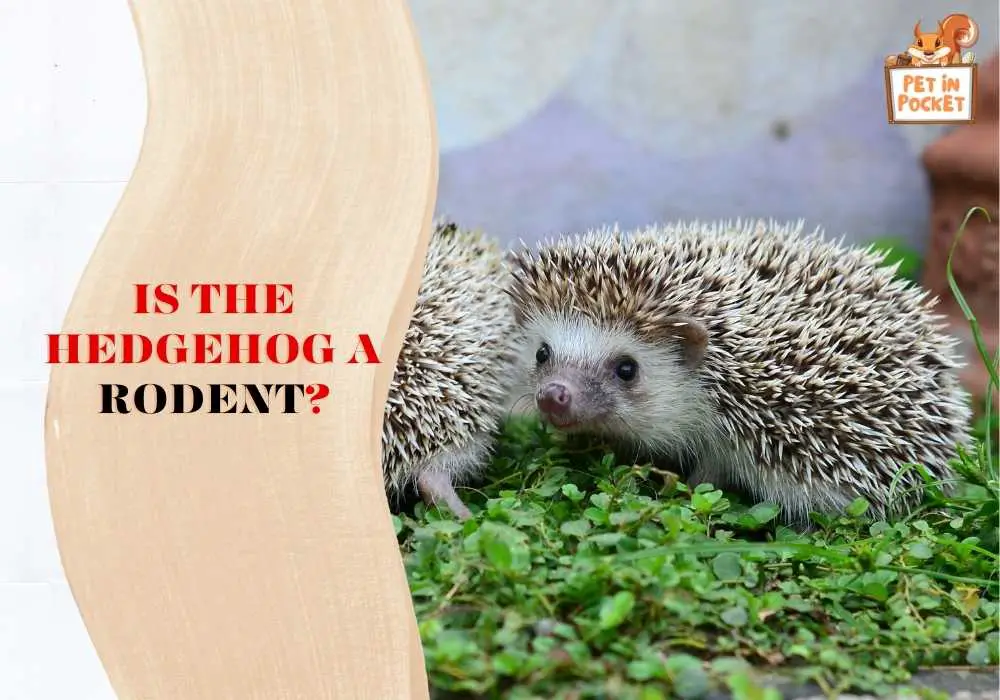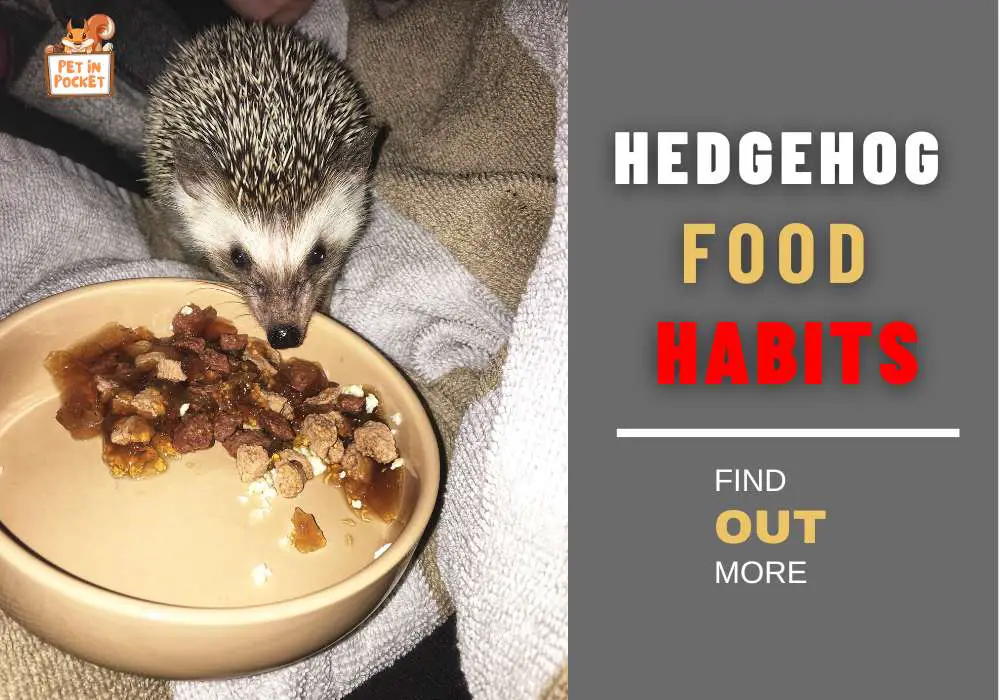The little spiky creature known as the hedgehog can often make you ask “Is the Hedgehog a Rodent?” This question might come due to its smaller stature and behavior similar to other rodents. However, in contrast to the widespread misconception, hedgehogs are not rodents.
An overview of the biological category of hedgehogs will help you clarify their unique traits, evolutionary history, and critical distinctions from rodents, which are a group that includes mice, rats, and squirrels.
By examining characteristics like morphological characteristics, dietary habits, and reproductive practices, we may better understand hedgehogs’ place in the diverse range of mammalian species.
Table of Contents
Do hedgehogs and rodents have any similarities?
There are certain parallels between hedgehogs and rodents, even though they vary significantly in terms of their morphology, behaviour, and evolutionary history:
| Size and Habitat: | Tiny animals, rats and hedgehogs may live in various habitats. They often inhabit fields, gardens, woods, and cities, where they dig burrows or nests. |
| Nocturnal Behavior: | Many rodents and hedgehogs are nocturnal. Because of this habit, they can obtain food at night and evade predators during the day. |
| Adaptability: | Rodents and hedgehogs are resilient animals in various environments and weather conditions. They have developed to fill multiple specialized roles in their different environments. |
| Omnivorous Behavior: | Hedgehogs eat a lot of different things, including plants and small animals. Similarly, rats are renowned for eating various foods, including seeds, nuts, insects, plants, and sometimes even tiny animals. |
| Predator-Prey Relationships: | Various predators, such as carnivorous mammals, snakes, and birds of prey, use hedgehogs and rats as prey. In the food chain, they are often targeted because of their tiny size and susceptibility. |
| Reproduction: | Via sexual reproduction, rats and hedgehogs generate live progeny. Typically, they have many young in a single litter. |
Hedgehog and Rodent Evolution Overview

The evolutionary history of hedgehogs and rodents, two distinct groups of mammals, showcases the rich tapestry of adaptation and survival strategies that have emerged in the animal kingdom, highlighting the diversity of mammalian evolution.
Hedgehog Evolution
Initially, hedgehogs, belonging to the family Erinaceidae within the order Eulipotyphla, share their lineage with moles and shrews, contrasting sharply with rodents. This divergence from other mammalian groups signifies a critical juncture in the evolution of mammals.
The ancestors of modern hedgehogs appeared approximately 15-20 million years ago, resembling today’s hedgehogs but notably lacking their characteristic spines. Gradually, these creatures developed their iconic spines through evolutionary processes, serving as a formidable defence mechanism against predators.
This evolutionary development underscores the ability of species to adapt to environmental pressures and threats, showcasing the ingenuity of natural selection. Moreover, the unique physiology of hedgehogs, particularly their ability to roll into a protective ball, exemplifies the animal kingdom’s diverse and inventive survival strategies.
Rodent Evolution
Conversely, rodents, classified under Rodentia, embarked on a distinctly different evolutionary path. Emerging around 56-65 million years ago, during the decline of the dinosaurs, this period provided rodents with a golden opportunity to diversify and adapt to new ecological niches. Characterized by their ever-growing incisors, essential for gnawing, rodents exhibit a remarkable range of adaptations tailored to their environments.
From arid deserts to lush rainforests, rodents have successfully colonized nearly every terrestrial habitat, demonstrating their extraordinary adaptability and evolutionary prowess. This diverse order includes many species, such as mice, rats, squirrels, and beavers, each uniquely adapted to specific environmental conditions. The evolution of rodents is particularly notable for their ability to exploit various food sources and habitats, a critical factor in their widespread success and numerical dominance among mammals.
Physical Characteristics of Hedgehogs and Rodents

People often put hedgehogs and mice in the same group because they are both small and like to live in similar places, but they are very different in appearance.
Fur vs. Spines
The first thing that comes to mind about how hedgehogs and rodents differ is how their bodies are covered. The spines of hedgehogs are well-known. However, they are modified hairs rather than true spines. Because of their hardness, these spines provide a substantial barrier against predators.
A hedgehog may roll into a ball and project its spines in all directions when feeling threatened. Deterring several predators is a very efficient defence tactic. On the other hand, rodents have a layer of soft hair that varies depending on the species in terms of thickness and length. Fur may be used for various functions, including protection from the cold, camouflage in the wild, and, in some cases, as a sensory aid.
Face Structure
Rodents and hedgehogs have quite diverse face structures, indicative of their varied eating and living patterns. The long, pointed snouts of hedgehogs are well suited for scrounging insects and grubs in confined areas and dense vegetation.
They can find food more quickly because of their strong sense of smell and nose shape. On the other hand, the snouts of rodents vary widely in form. For example, mice’s pointed snouts are helpful for searching for seeds and tiny insects, whereas squirrels’ blunter snouts are more appropriate for breaking through complicated meals like nuts.
Eyes and Ears
Both rats and hedgehogs exhibit notable modifications in their sensory organs. Because they are nocturnal animals, hedgehogs have smaller ears and eyes. Their sense of smell and hearing are more important to them than their eyesight for nighttime navigation and food gathering.
When compared to the size of their heads, rats usually have more prominent ears and eyes. These improved sensory organs help find food and spot predators, which is essential for survival. For instance, a mouse’s huge eyes help with night vision, and its enormous ears are susceptible to sound.
Mobility and Limbs
Although their legs are not designed for speed, hedgehogs’ tiny, robust legs are perfect for burrowing and digging. Their principal defensive mechanism is their unusual ability to curl into a ball. In contrast, rodents have developed limb structures that are different from one another to fit their varied lives. While some animals, like moles, have limbs designed for digging, others, like squirrels, have long, nimble limbs for climbing and leaping between trees.
Variations in Tails
An interesting feature of the anatomy of hedgehogs and rodents is the function of their tails, which emphasizes the variety of evolutionary adaptations. The tail of a hedgehog is a relatively subtle characteristic; it is usually small and concealed behind the animal’s rough coat. It is not a big instrument for communication or balance, and it has little effect on their daily activities.
Their lifestyle, which includes less climbing and agile movements where balance would be essential, is probably the reason for their lack of dependence on the tail.
On the other hand, rodents display an astounding diversity of tails, each tailored to their ecological niches and ways of existence.
Squirrels, for example, have bushy tails that serve a purpose beyond appearance. These tails are essential for them to stay balanced while navigating the trees. The squirrel can better steady itself during jumps and twists because the tail functions as a rudder. The tail’s fluffy texture also helps the animal regulate its body temperature and may be used as a winter blanket.
Diet and Dental Health
There is a strong correlation between hedgehogs and rodents’ dietary and eating habits and the variations in their dental anatomy. The teeth of hedgehogs, mostly insectivores, are tiny and sharp. Their food consists mainly of insects, worms, and odd small vertebrates and fruit. These teeth are thus well fitted for their needs. Their ability to cut through the exoskeletons of insects and other hard-bodied prey mostly depends on how keen their teeth are.
Unlike rodents, hedgehogs do not need their teeth to develop continually. They don’t eat anything that might cause their teeth to deteriorate too much. As a result, they do not need the frequent gnawing activity like rats do, and their tooth structure stays relatively similar throughout their lifetimes.
Conclusion
In conclusion, the blog article clarifies that hedgehogs are members of the distinct Erinaceidae family and are not rodents. Understanding this difference is crucial to comprehending their unique traits and ecological functions. Accurate categorization improves our understanding of biodiversity and aids in the protection of species. The article invites readers to spread this knowledge, which will help people understand hedgehogs and their unique role in the animal realm.
FAQ
How Do Hedgehogs Vary from Porcupines?
Both hedgehogs and porcupines have spines; however, they vary. Hedgehog spines are shorter and non-detachable than porcupine quills. They have diverse families and customs.
Can Hedgehogs Be Pets?
Hedgehogs may be pets in certain places, but they need special care. They need a high-protein diet, warmth, and cautious handling to prevent spine injuries.
How Do Hedgehogs Help Nature?
Gardens and crops benefit from hedgehogs’ assistance in controlling pest loads. They also aerate the soil by digging.
Is The Rodent Family Diverse?
Rodents comprise around 40% of all mammalian species and are very diversified. They live in a variety of settings throughout the world.
What Are The Usual Diets of Rodents?
Depending on the species, rats have different diets. It may consist of flora, insects, fruits, nuts, seeds, and, sometimes, tiny animals.






Leave a Reply